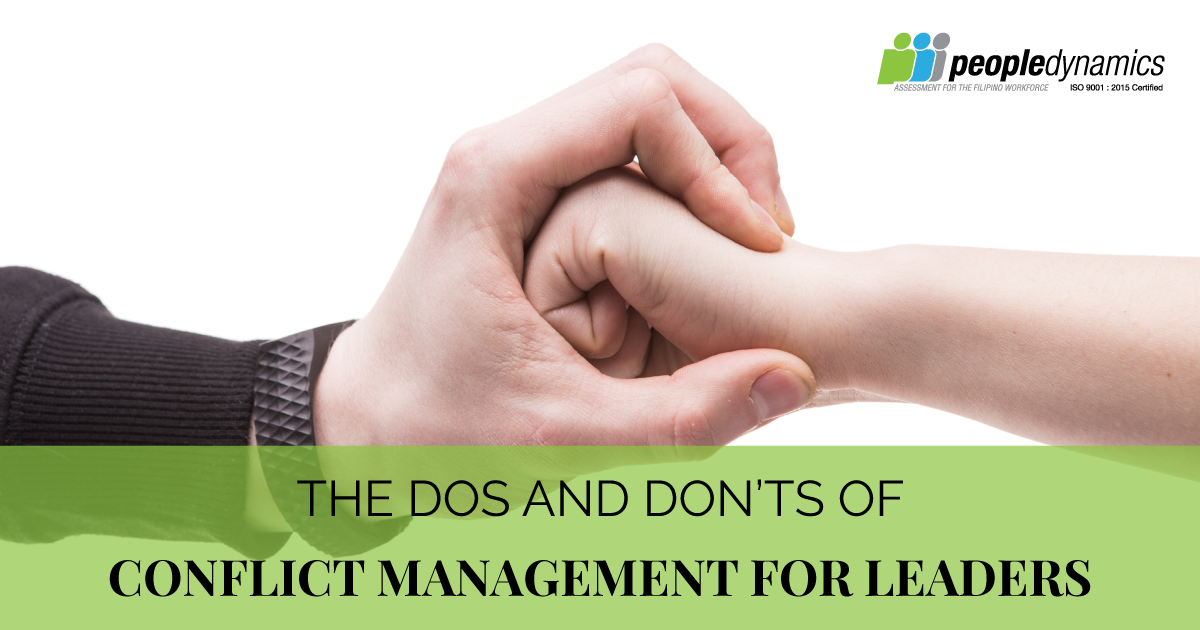Leaders have many roles in the workplace. They visualize, motivate, and guide employees to achieve the goals of the organization. Another role that usually falls to leaders is conflict management and resolution. As a leader, it’s critical that you know how to deal with and resolve conflicts. However, your approach to dealing with these challenges on your own may not be as effective in the workplace and to your team members, especially in a diverse organization. So, we list down some dos and don’ts of conflict management for leaders below to keep in mind next time you have to deal with tension in the workplace!
The Dos and Don’ts of Conflict Management for Leaders
Don’t: Ignore the tension
Just like how a river can look calm on the surface but with roaring currents below, your team may look like they’re getting along since no confrontation is happening, but cues are indicating that it will happen.
Don’t ignore the tension–this is one of the most common conflict management mistakes. Not acknowledging it will not make it go away. Ignoring the problem will only make it grow and sully the relationships between your team members, as well as the trustworthiness of the workplace.
Do: Know when to intervene
Two of your employees about arguing something, and you feel that you need to intervene. But is it really necessary for you to do so?
As a leader, you have to know the right timing for you to intervene. Is the conflict between your team members that serious that they need intervention from you? Or is it a conflict that they can resolve themselves? If you step in too early into an argument, you may be seen as someone who’s “making a big deal” out of the situation, and thus affecting your reputation as a leader. On the other hand, if you step in too late, things may be hard for you to resolve since the problem is already out of hand, and worse, already affecting the organization’s operations.
Base the timing of your intervention on the tone of the conflict, rather than on the content. You need to be able to “read the room”, and recognize more than the words being said. Non-verbal cues are as important as their verbal counterparts. Remember also to keep your emotions in check–getting swept up by the problem and letting your emotions get to you will not solve it.
Don’t: Be Biased
It’s human nature to like some colleagues better than others. But playing favorites, especially during conflict resolution, is a major no-no. When leaders favor one employee over another, morale and productivity suffer.
The key to this is to recognize the dangers and to look beyond the situation. Usually, people don’t know how they come across to other people. Being more self-aware is a good start to stop bias. Saying no to biases is also a good strategy to take your recruitment to the next level this year!
Do: Listen
Effective communication is one of the keys to successful conflict management. And listening is one of the most vital parts of effective communication. Needless to say, as a leader, having good listening skills is essential when dealing with conflict.
Not listening when managing conflict is as ineffective as ignoring and not acting on the problem. Remember that you don’t only want to solve the problem, you also want to prevent future problems. Listen to one side first, without interruption as much as possible, and then listen to the other party. From there, pick up the things that aren’t said–get to the bottom and identify the source. Some arguments arise even from the smallest of misunderstandings. The most efficient and effective way of solving conflict is to first know its root.
Do: Have empathy
Empathy is a powerful tool for a leader. It shows that you respect your team members and that you care for them. Remember that resolving conflicts, it’s not about you, it’s about the parties involved. See the situation in their perspectives and then you can understand why they acted the way they did, which then resulted in a problem.
No human being is perfect, and conflict will always happen. At the end of the day, a leader’s role is to guide their team members towards achieving a common objective. So, don’t forget that conflicts aren’t permanent, and with the right management, it can even help you and your team members stronger to achieve your goals.




